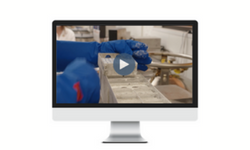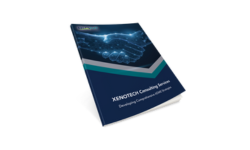
June 9, 2023
Advanced In Vitro ADME Strategies: ICH Guidelines & Novel Methodologies
- days
- Hours
- Minutes
- Seconds
You're Invited!
Attend BioIVT’s symposium discussing the new ICH drug interaction guidelines and novel in vitro model systems that better recapitulate the in vivo condition, including whole-cell hepatocyte models, organoids, and Sandwich Culture Human Hepatocytes (SCHH).
Featuring BioIVT and industry researchers, this complimentary event will present recently published studies and other data on how complex models are being used to investigate the ADME-Tox properties of new drugs.
Registration is required to attend.
Agenda
-
Coffee & Gathering
9:30 - 10:00
-
Morning Sessions
10:00 – 12:30
-
Lunch
12:30 - 13:30
-
Afternoon Sessions
13:30 - 16:00

.png)
Highlights of the In Vitro Sections of the Draft ICH Drug Interaction Studies Guideline and Comparison with Current Guidance
Speaker: Brian Ogilvie, PhD, BioIVT
Abstract: In June 2022, the ICH released the draft of its harmonized Drug Interaction Studies Guideline (M12). The guideline resulted from several meetings of the Expert Working Group since 2018 with the goal of harmonizing member regulatory agencies’ guidelines into one that will be used across all member countries. After review, the guideline will be adopted in 2024. This presentation will describe differences between current in vitro drug-drug interaction guidance from the relevant US FDA, EMA and PMDA guidance documents, and how to plan on meeting the ICH M12 guideline.
.png)
Assessment of In Vitro systems for Evaluation of Drug-Drug Interaction Risk Associated with Therapeutic Peptides
Speaker: Rune Nørgaard, PhD, Novo Nordisk
Abstract: Biologics, such as peptides, proteins and cytokines, have been reported to down-regulate CYP450 enzymes in vitro. However, in vitro-to-in vivo extrapolation remains unclear, as in vitro downregulation is often not observed in clinic, as seen for the peptide NN1177.
The current work utilized in vitro models of different complexity to further investigate CYP- and transporter down-regulation. Initial screening of 9 compounds of various modalities was performed utilizing sandwich-cultured human hepatocytes from multiple donors. Positive controls were included for CYP suppression and CYP induction. Four compounds were then selected to be investigated in HEPATOPAC® models, liver spheroids and liver-on-a-chip. The results and findings of these evaluations will be presented and discussed during the current talk.
.png)
Speaker: Mark Warren, PhD, BioIVT
Abstract: Excipients are “inactive” ingredients that are added to therapeutic drug products that are not intended to exert therapeutic effects by themselves. However, these excipients may inhibit intestinal transporters that can be responsible for enhancing or reducing the absorption of not only the drug that is administered along with the excipient, but also the absorption of co-medications that have never been tested with that excipient. Generic products may contain different excipients than the original branded medication, which may also contribute to unexpected drug-drug interactions. Numerous excipients were tested and shown to inhibit OATP2B1, an intestinal drug uptake transporter, as well as BCRP and P gp, intestinal drug efflux transporters.

LUNCH
Lorem ipsum dolor sit amet, consectetur adipiscing elit, sed do eiusmod tempor incididunt ut labore et dolore magna aliqua.
.png)
Model Selection, Protein Effects, And Transporter Regulation: Critical Components To Improve In Vivo Predictions
Speaker: Kenneth R. Brouwer, PhD, RPh, Vice President of Technology, ADME-Tox, BioIVT
Abstract: In both in vitro systems and in vivo, it is the unbound intracellular concentration (ICC) that is the driving force for processes that occur inside the hepatocyte. Achievement of an in vivo relevant ICC requires a polarized whole-cell system that integrates uptake into the hepatocyte, metabolism, and efflux (basolateral and canalicular) from the hepatocyte. Extensive protein binding can limit the uptake of many drugs, however for some drugs the estimation of intracellular concentration, and hepatic clearance cannot be correctly predicted based on the free (unbound) drug concentration. Additionally, studies have shown that transporters can be upregulated similar to metabolic proteins, resulting in increased uptake and/or efflux. Use of polarized whole-cell models and optimized culture conditions for in vitro systems may improve predictions of a drug’s in vivo properties and effects.
.png)
Speaker: Sagnik Chatterjee, PhD, Ferring Pharmaceuticals
Abstract: Efflux of bile acids via bile salt export pump (BSEP) present in the hepatocytes canalicular membrane, is the rate limiting event in bile formation and flow. Genetic defects in BSEP leads to liver transplantation and may lead to fatalities if not treated. Naturally, BSEP inhibition by investigational compounds raises concerns of drug-induced liver injury (DILI) via disturbing bile acid homeostasis/accumulation. DILI is a concern for discovery companies and to patient safety during clinical trials, as most of the times it gets undetected till the investigational compound is exposed to a large population of patients. However, significant analysis over the years suggested that BSEP inhibition alone may not be sufficient to precipitate clinical DILI. Mechanisms other than direct inhibition of BSEP may impact bile acid homeostasis and precipitate DILI. Finally, simpler systems such as sandwich-cultured hepatocytes when used effectively can provide mechanistic and decisional information regarding drug-induced cholestasis.
.png)
Speaker: Dennis Hekman, AstraZeneca
Abstract: In recent years, hepatic in vitro models have progressed from conventional 2D cultures to more physiological relevant 3D models such as spheroids. Hepatic spheroids, either as monoculture or co-culture with other hepatic cells, have shown to serve well for evaluating metabolism, hepatotoxicity, and can be induced to a diseased stated (e.g. NAFLD). To further progress the spheroids model it is of great interest to introduce hepatic vasculature, as found in situ. Here, we aim to develop an hepatic in vitro spheroid model with biliary vasculature by means of bioprinting. bstract to follow. Abstract to follow. Abstract to follow. Abstract to follow. Abstract to follow. Abstract to follow.
Speakers
.png)
Brian Ogilvie, PhD
VP of Scientific Consulting, BioIVT
.png)
Rune Nørgaard, PhD
Research Scientist, Novo Nordisk
.png)
Mark Warren, PhD
Senior Director, Transporter Assay Services, BioIVT

Ken Brouwer, PhD, RPh
VP, Technology, ADME-Tox, BioIVT
.png)
Sagnik Chatterjee, PhD
Senior Research Scientist, Ferring Pharmaceuticals
.png)
Dennis Hekman
Research Scientist, AstraZeneca
Scandic CPH Strandpark
The event will be held at the Scandic CPH Strandpark in Kastrup, Denmark. The hotel is located next to Oresund with fantastic views of the water, bridge and city skyline. The area offers a wide selection of recreational outdoor activities, and you can reach downtown Copenhagen in 12 minutes.
Resources

Watch this video to learn why BioIVT is your trusted partner for drug discovery and ADME-Tox in vitro models.

Learn more about how XENOTECH Consulting Services can optimize in vitro research programs and ensure data packages are ready for regulatory submissions.


.png?width=250&height=150&name=AT_Q22023_Cophn%20Images%20(1).png)
